Bob Claver
as Director:
A Partial Resume

Rhoda
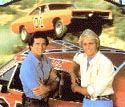
The Dukes
of Hazzard
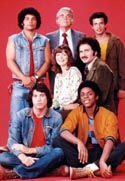
Welcome Back
Kotter
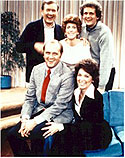
The Bob
Newhart Show
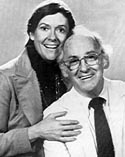
Doc
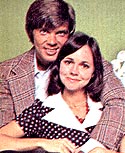
The Girl With
Something Extra
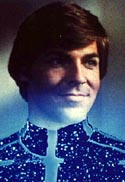
Automan
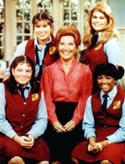
The Facts
of Life
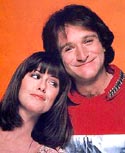
Mork and Mindy

Charles in Charge
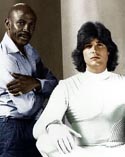
The Powers
of Matthew Star
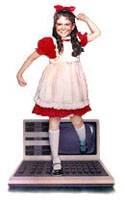
Small Wonder
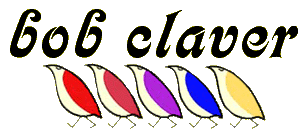
Continued...
GH: Recent Partridge Family TV specials on have focused an alleged “crush” that Susan had on David. Have they been over exaggerated or was it a four-year long unrequited love affair?
BC: There may have been a crush – after all they were both teenagers, but if it was going on for so long, why was she living with Dale McRaven [a PF writer] during most of the filming? I don’t think these specials look for facts. I think they just want a story – a reason to get people to watch.
GH: What did you think of the TV movies that aired this season on ABC (C’mon Get Happy: The Partridge Family Story) and NBC (The David Cassidy Story)?
BC: I watched some of it. They were just awful. I don’t understand why they even needed to be made. I don’t know why all of this is now happening. I mean, The Partridge Family wasn’t this giant hit.
GH: Well, I think the music propelled the series into something it wouldn’t have been, otherwise.
BC: I guess you would know better than me. But there have been so many specials lately. VH-1 called me and filmed me for their Partridge Family “Behind the Music.” I told them they couldn’t have a special about the music with the people they had called. But it changed half way through. It became all about Danny instead of the music. They wound up with half a show, because they didn’t have enough time to interview the musicians. They were all involved in a recording session for David’s TV movie. So to fill out the hour, they turned to Danny because he was funny and a good interview. It was a conscious thing after they started.
GH: Speaking of Danny, how problematic was his homelife back then?
BC: His mother was great – a real sweetheart! His father was just awful. That’s not bull**** – the stories of his father beating him. A couple of times Danny would come to the set, and we would have to put makeup on him because of some bruising. But you can hurt a kid with words, too – sometimes more than with a fist. I never liked Joe [Bonaduce] at all. Ever. Ever. Ever.
GH: Is it true that Shirley banned Danny’s father from the set because of it?
BC: That very well could have happened. I remember his parents were splitting up at the time. And I’ll tell you something: If Shirley asked, we would have done it. Because she asked for nothing. She was the easiest star in the world to work with. Betty [Bonaduce, Danny’s mother] always brought him to the set, because you have to have a parent there at all times. His father was supposedly a writer, but we never used him. When he was around, he was probably looking for work. I know Danny has been through a lot, and I am really happy for him today. He’s a great, great guy. I’ll tell you, his wife [Gretchen] has been instrumental in helping him straighten out his life, and have the successful career he has today. He used to be on the radio in Chicago, and I would call him all the time.
GH: Why was the theme song changed from season 1 to season 2?
BC: That was a suggestion from Wes Farrell. The sound had changed slightly, with David’s added vocals. I think Wes even wrote the lyrics to the second version.
GH: Who hired Sandy Dvore to design the opening credit animation?
BC: I did that! I used him on other shows after that, too. I think that was his first job for Screen Gems. He did a good job! Talk about your limited animation! There again, was a case where we didn’t have any money. It was really hard to get money from them [Screen Gems] at times.
[Editor’s note: Look for our exclusive interview with Opening Titles Creator, Sandy Dvore coming very soon!]
GH: Did the added element of music make this show an expensive one to produce?
BC: Oh, sure! We had to shoot an extra day. At some point, when we started the show, Len Goldberg took over as head of Screen Gems. I remember telling Len that we couldn’t do the show in three days with children, because of the hours they could work. Three days is the normal time to shoot a one-camera half-hour show. Rehearsals were extra. We took about one half of one day to shoot the musical numbers. He agreed, but said we had to be finished every day by 6pm. So after that, it was fine. We had a four-day shoot, but only one day to rehearse.
GH: It only happened in a few instances, but why were certain musical scenes and songs repeated on different episodes?
BC: We probably had a short show. If we ran short on time, it would have been cheaper to re-run a musical scene than writing a brand new scene at the last minute. We would have had to dress the set, costume the actors, etc.
GH: You probably never thought that 30 years later, people would be still watching, and have them on tape to scrutinize!
BC: That’s right. Plus, let’s face it – most of the numbers were close-ups anyway. We rarely had a fabulous setting that you wanted to show off. We did the wide shot in the beginning, or if we had a lot of extras. At the time, it was tough because we didn’t have that many extras to fill an auditorium. Plus, the kids weren’t exactly on the beat. We gave them lessons, but it was still hard. They were so young. Susan became really good with the keyboard, and Shirley looked like she was having the best time – probably because she was singing.
GH: Did Jack Cassidy visit the set a lot?
BC: No, not that I remember. He was in the first pilot, but I don’t remember him around too much.
GH: In the unaired pilot, Shirley’s name is Connie. Do you know why that was changed?
BC: Yes – she asked for it. Simple as that. A lot of actresses love that, when they are the star of the show.
GH: What happened to Simone?
BC: With all those kids and all those musical numbers, who needed a dog too?
GH: Are there any episodes that stick out in your mind as being a lot of fun to do?
BC: I didn’t direct this one, but I LOVE the Christmas episode we did with Dean Jagger. I thought it was produced beautifully, the costumes were marvelous. It was a real good script, and David was marvelous.
GH: Do you remember any in particular that you hated?
BC: Oh, plenty. I’m sure there were many I didn’t like. Most of them were in the middle of the run.
GH: Why did certain shows travel? Was it an attempt to raise ratings during sweeps?
BC: No it was just to do something different. We did one at Marineland with Howard Cosell, and the one on the cruise ship, which allowed everybody to take a boat trip. I didn’t go, but everybody else got to. I directed the one in Cincinnati at King’s Island. I liked that one. That was fun. We had about 50 or 60 cops just for David’s security, because we were staying at a motel nearby. At one point, an emery board was needed, and I asked this woman if she had one. She said, “I do if my son can meet David Cassidy!” So I got David to come over, and I got my emery board! People were nice. We didn’t have too much trouble. They were enjoying watching us shoot. There was a wide-angle shot used when they were singing the musical number, and that was just regular people, checking it out! That was a fun week! Johnny Bench was in that one, and Mary Ann Mobley. Gary Collins [Mary Ann’s husband] came down that week as well!
GH: What did you do once The Partridge Family was cancelled?
BC: I did a pilot with Sally Field called “The Girl With Something Extra”. Bernie [Slade] wrote it and it sold in a minute. It was a great cast, with Sally and John Davidson. When we tested it, it went through the roof! But the show just didn’t work. It was about a wife that had ESP, and if a wife always knows what her husband is thinking, it’s hard to get a story! Had we done a show about a young yuppie married couple, it would have been great!
GH: What did you do after that?
BC: I went back into directing. I directed a whole slew of shows, and had a brief stop along the way working in development for Grant [Tinker, at MTM]. I loved working with him, but I just wanted to direct, and go home. So I switched into directing full time. First of all, I love the idea of residuals, which turned out to be fabulous. I did a series that was one of those syndicated series, where you get paid no money – like $5000.00 per episode. It ran forever! I did 80 of them. It ran about $1,000,000 worth of residuals for me. It was called “Out of this World” with Donna Pescow. It was about a woman who has a child with an alien, who was voiced by Burt Reynolds. It came at a time when I was getting ready to quit working, and it really worked well for my pension!
GH: What do you consider the highlight of your career?
BC: Highlight - or the most fun? Because they are very different. Writing Captain Kangaroo for 5 years was a nice accomplishment. But for sheer fun, it would have to be "Mork & Mindy". Robin Williams and Jonathan Winters were fun to work with. It was a wacky set! There are a lot of shows I liked. "All's Fair" with Bernadette Peters and Dick Crenna was another great show. I liked that because it shot high. The writing was superb and they tried to do things that were timely. It was like if William Buckley had married Jane Fonda. I directed all of those, but it only lasted one year.
GH: Are there any projects that stand out as your least favorite?
BC: Well, I don't think I even want to go there. It would just hurt feelings, and there's no point in that.
GH: What made you move back to Chicago?
BC: I never liked L.A. No reason to be there! I like to visit, though. I was there last year, and rented an apartment for a month. I visited friends, like Bernie (Slade), etc. I love the winter, and we have a great theatre here called the Steppenwolf Theatre with was started by John Malkovich and Gary Sinese. I’ve lived here since 1993 and I haven’t missed one of their plays. They do great work.
And so do you!! Cmongethappy.com would like to thank Bob Claver for sharing his Partridge Family memories and music!
©2000 Scott Awley for www.cmongethappy.com and respective copyright holders (photos). All rights reserved. No portion of the text of this article may be produced in any form without the written permission of the author.